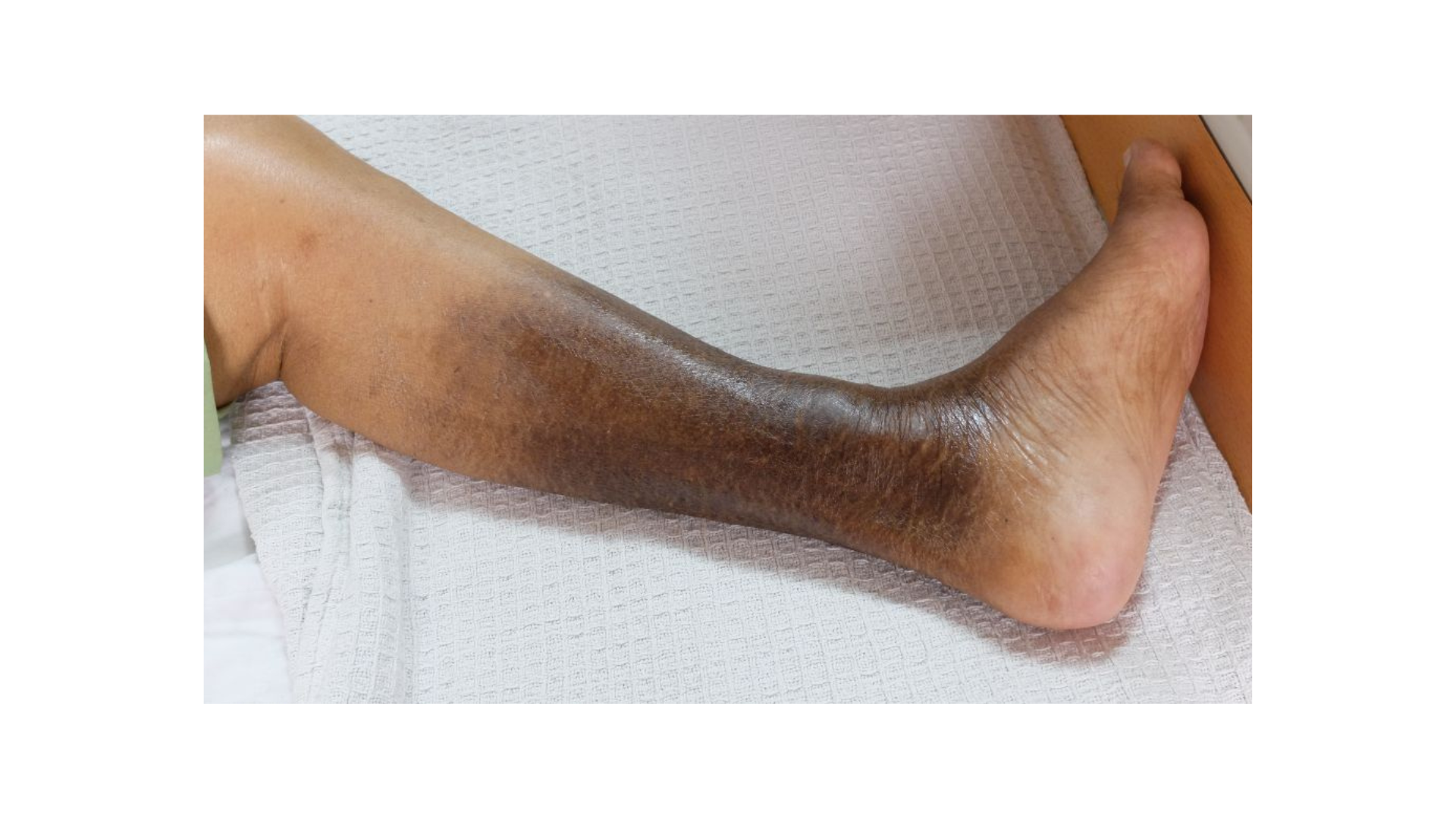Managing Patient Populations and Health Equity
March 31, 2022
Introduction
Complex wounds require increased attention, time, and resources to treat. Certain populations, including pediatric patients, immunocompromised patients, and older adults, are at higher risk of developing complex wounds as a result of age or comorbidities. For these populations, a multidisciplinary approach is required for the most effective wound care. Additionally, comprehensive documentation and standardized wound assessments can help clinicians identify areas of concern quickly and proactively given the unique needs of the population.
High-risk Populations
Pediatric Patients
The specific risk factors and needs of the pediatric population change throughout development. Challenges in neonatal wound care include increased transdermal water loss, fragile skin, impaired epidermal barriers, impaired mobility and nutrition, limited ability to communicate needs and sensations, increased rate of absorption for topical agents, and evolving immune, renal, and hepatic systems.1
How much do you know about diverse patient population management? Take our 10-question quiz to find out! Click here.
Many of these challenges continue through early childhood, with the addition of increased fear and anxiety (such as tape phobias), decreased pain tolerance, increased mobility during play, risk of contamination near the diaper region, and a tendency to remove wound dressings. Older children may need psychological preparation for wound care interventions based on their developmental stage.2
Immunocompromised Patients
Patients who have had an organ transplant, have active cancer and are undergoing treatment, have HIV infection, or have congenital conditions that cause a weakened immune response may all be classified as immunocompromised. Because their immune systems are weakened, special consideration must be made for systemic immune support and infection prevention in the wound bed.3 Care should also be taken to ensure these patients are not exposed to infectious diseases, including COVID-19. Steps to prevent exposure can include ensuring they have a private room, limiting the number of staff and visitors entering and exiting the room, and ensuring that surfaces and hands are disinfected frequently. Immunocompromised patients may also be unable to undergo certain interventions, such as autolytic debridement. These are all factors that must be taken into consideration when creating a care plan.
Older Adults
At the microscopic level, aging DNA leads to changes in the immune response, circulatory system, blood glucose levels, and skin integrity. Additionally, older adults are more likely to have comorbidities such as diabetes, cardiovascular disease, hypertension, cancer, etc, which can further complicate the microbiome of a wound.
On a systemic level, older adults have higher rates of impaired nutrition, whether from difficulty absorbing essential nutrients or from poor intake. Impaired nutrition limits the body’s ability to support wound healing because of the lack of macronutrients (especially protein) and coenzymes.5
At the visible level, older adults have more fragile skin. Their decreased skin integrity means that adhesive wound dressings may cause further skin injury but also that wound dressings must protect the fragile skin from external shearing or pressure.2 Therefore, wound dressing selection must balance wound healing and skin integrity.
Interventions to Promote Better Outcomes
Multidisciplinary Approach
When considering the unique wound care needs of these high-risk populations, it is essential to include additional disciplines that can support efficient wound closure and healing.
In pediatrics, for example, a child-life specialist should be consulted to help integrate the child’s play needs into wound care considerations. Additionally, child-life specialists can assist clinicians and caregivers in finding ways to decrease the child’s fear of and attention to the wound care interventions. These specialists may suggest ways to make the wound care more fun (such as decorating the dressings) or ways to distract the child effectively during dressing changes, among other interventions.
For immunocompromised patients, specialties that are managing their underlying comorbidities should be consulted. Patients who have recently had a kidney transplant will need their nephrologist to be consulted on wound care interventions to provide input on kidney function and immunosuppressive therapies. Often for these patients, wound care interventions must be changed based on kidney function and immunosuppressive therapies. In contrast, for patients with cancer, the wound care team should include input from the oncologist because chemotherapy or radiotherapies may be altered for a short time to manage the wound more effectively. Having these other disciplines involved in the wound care decision-making process can improve the effectiveness and efficiency of wound healing.
Similar to immunocompromised patients, wound care for older adults may also benefit from the inclusion of specialists who manage their comorbidities. Unique to this population, however, is consideration of life stage and severity of conditions. Wound care may have a different focus during end-of-life care, and appropriate disciplines should be consulted, including palliative care and hospice, based on the needs and desires of the patient.
No matter which population clinicians are treating, all multidisciplinary teams should include the patient and caregivers. Decisions made by the health care team alone require patient and caregiver carryover. Therefore, patient and caregiver needs and desires should always be considered as part of the decision-making process, especially in these high-risk populations.
Comprehensive Documentation
Because wound care for high-risk populations requires a multidisciplinary approach, documentation must be comprehensive from the start of care to identify high-risk patients and support asynchronous interventions. The wound care team may expand across nurses, physical therapists, certified nursing assistants, and many other disciplines of physicians. For each member of the team to carry out the most effective interventions in the timeliest manner, recommendations must be clear and comprehensive. Valuable time can be lost clarifying orders or resolving conflicting orders from different physician specialties. Having centralized and comprehensive documentation can support high-quality wound care that accounts not only for the wound but also for the patient’s comorbidities and age-related needs. Utilizing digital documentation methods can help ensure that documentation is easily available to the entire care team. Further, systems that utilize custom workflows can help ensure that the proper steps are taken to manage the wound.
Standardized Wound Assessments
In addition to comprehensive documentation, effective wound care for high-risk populations requires the standardization of wound assessments. This standardization allows clinicians to quickly see whether wound interventions are effective or not, based on a given set of outcomes. Creating a set of outcome measures that are standardized across patients and assessments gives clinicians across the wound care team a clear indication of wound healing.
For example, wound size should be standardized to always be consistent at the same points. Team members should be trained on these markers and standardized measurements taken at given intervals to track progress. Standardized measures may include:
- Size
- Exudate type, consistency, and amount
- Percentage of wound area debrided
- Presence or signs of infection
- Pain level
Using these measures to track the wound over time can allow clinicians to monitor healing progress efficiently, determine whether interventions are effective, and change the treatment plan as needed. Utilizing digital images can also help with wound assessments, as it allows for clinicians to look back at the wound's progress, or to re-assess a given image without having to disturb the wound dressing to look again.
Conclusions
Pediatric patients, immunocompromised patients, and older adults are among the populations at higher risk of wound complications and poor wound healing. Comorbidities and age-related factors affect not only the natural wound healing process but also the response to interventions. A multidisciplinary approach is essential for these patients to promote better outcomes in wound care. Comprehensive documentation and standardized wound assessments support the effectiveness and efficiency of this multidisciplinary approach.

References
- Patel S, Tomic-Canic M. Neonatal debridement: tricks or treats. J Wound Technol. 2014;1(23):12-13.
- King A, Stellar JJ, Blevins A, Shah KN. Dressings and products in pediatric wound care. Adv Wound Care (New Rochelle). 2014;3(4):324-334. doi:10.1089/wound.2013.0477
- Coccolini F, Improta M, Cicuttin E, et al. Surgical site infection prevention and management in immunocompromised patients: a systematic review of the literature. World J Emerg Surg. 2021;16:1-33.
- Davis JW, Chung R, Juarez DT. Prevalence of comorbid conditions with aging among patients with diabetes and cardiovascular disease. Hawaii Med J. 2011;70(10):209-213.
- Alam W, Hasson J, Reed M. Clinical approach to chronic wound management in older adults. J Am Geriatr Soc. 2021;69:2327-2334.
The views and opinions expressed in this blog are solely those of the author, and do not represent the views of WoundSource, HMP Global, its affiliates, or subsidiary companies.












Follow WoundSource
Tweets by WoundSource